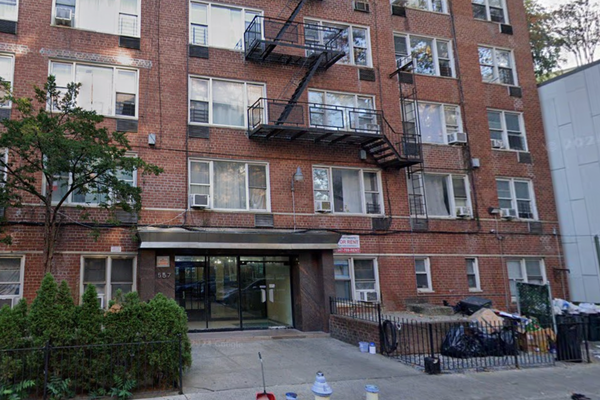Violent extremism remains a persistent and resilient threat, constantly adapting and evolving. It is an endlessly demanding problem and we can neither afford to ignore it nor allow it to disproportionately consume our finite resources.
This is the hard reality of terrorism. But it is not hopelessly grim. While the threat can’t be eliminated, it can be contained and managed.
This week, Mike Burgess, the head of the Australian Security and Intelligence Organisation (ASIO), told Senate Estimates the threat of a terror attack from a right-wing extremist group had receded after COVID restrictions had been lifted.
This followed the downgrading of Australia’s terror threat level at the end of November. Both developments give reason for hope.
Our systems are working and our investments in mitigating the threat of terrorism are paying off, both in terms of security agencies and community responses.
Meanwhile, as the environmental factors that exacerbate the problem of extremism recede, so too does the threat. Another wave will come, but for now the respite is welcome, as it allows us to repair and rebuild.
In February 2020, when Burgess gave his first ASIO annual threat assessment, he warned that rightwing extremism had been brought into “sharp terrible focus” by the March 2019 Christchurch mosque massacre. He added:
In suburbs around Australia, small cells regularly meet to salute Nazi flags, inspect weapons, train in combat and share their hateful ideology.
Burgess astutely predicted that:
We expect such groups will remain an enduring threat, making more use of online propaganda to spread their messages of hate.
It is likely that even Burgess, Australia’s most senior intelligence chief, did not then have a clear picture of the scale and impact of the global COVID pandemic that was to come.
Three years on, with the pandemic restrictions now gone, Burgess observed that the impact of the collective anxiety, frustration and lock downs was sharply receding.
Some of that feeling does live on, but the number of cases we’ve been looking at, they’ve reduced significantly … There are less people in this country who want to conduct active violence in the name of their cause.
Not only has the tide now turned against those who would exploit anger and confusion to recruit new members to extremist groups, their impact was less than they had hoped for at the height of the pandemic. As Burgess said, it was not a “bumper campaign” for right-wing extremists.
Contrary to our worst fears, the reality is violent extremists struggle to persuade people to join their cause, whether it’s a well-organised group linked to the likes of al-Qaeda or the Islamic State movement, or a more ambiguous network linked to far-right extremism and conspiracy paranoia.
In crises and temporary, disruptive circumstances such as wars, pandemics and lockdowns, we can see violent extremists and groups make far-reaching gains. But even then, they only succeed in small sections of communities. We naturally fixate on their limited successes, of which the extremists loudly boast.
On one hand, it is good to be alarmed and roused to action. A couple of hundred young Australians were recruited by the Islamic State and al-Qaeda to fight in Syria and Iraq a decade ago. But after we became aware of the scale and extent of the problem – reflected in the national terror threat level being raised in September 2014 – good work by community groups and security agencies successfully prevented many more from departing Australia.
Similarly, the awareness of a rising threat from far-right extremists in the four years since the Christchurch attack saw security agencies, families, communities and broader society take action to prevent even more people from being radicalised.
These efforts bore fruit, mitigating the harm these extremists could pose and substantially containing the threat.
Nevertheless, as Burgess reminded us this week, the most likely threat we now face comes from a “lone-wolf” actor:
[…] an individual who goes to violence with little or no warning and they’re acting on their own because something has set them off […] including maybe the group they’re in is not satisfying their need.
The tragically fatal extremist attacks on two young police officers and a helpful neighbour in Wieambilla, on the plains of southern Queensland, in December speak to the enduring threat of lone-actor attacks.
It is precisely because violent extremists are only able to recruit a small number of people to join their causes that they have to work so hard to intimidate others through their actions and cast a long shadow.
After all, the very essence of their chosen method of using violence – or the threat of violence – to bring about social and political change is intended to terrorise society and channel and inflame hate. This, in turn, provokes angry, disproportionate and counterproductive responses from governments?.
We cannot afford to dismiss the resilient and enduring threat posed by violent extremism, just as we cannot allow ourselves to be overcome by terror or provoked into angry responses.
At the same time, we must not succumb to either cynicism or despair. It is foolish to speak about “winning” a “war on terrorism”. But it is equally foolish not to recognise that by working together against the efforts of those who would use hate and violence, we can reduce and contain the threat and build something better.
Read more: Is the terrorism threat over?
Greg Barton receives funding from the Australian Research Council. And he is engaged in a range of projects working to understand and counter violent extremism in Australia and in Southeast Asia and Africa that are funded by the Australian government.
This article was originally published on The Conversation. Read the original article.







